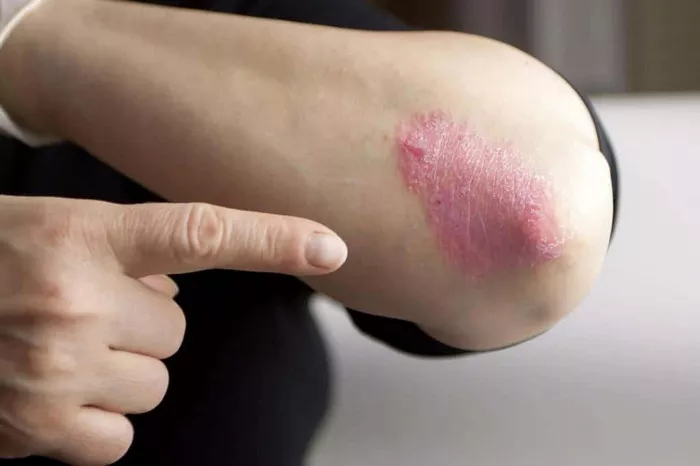Hidradenitis suppurativa (HS) is a chronic skin condition characterized by painful, inflamed nodules and abscesses, primarily affecting areas of the body where skin rubs together, such as the armpits, groin, buttocks, and under the breasts. These areas often also have a higher density of hair follicles, which can exacerbate symptoms and complicate the management of the disease. Effective hair removal can be a crucial aspect of managing HS, reducing friction, and potentially minimizing flare-ups. This article explores the best hair removal methods for individuals suffering from HS, evaluating their benefits, risks, and practicality.
Understanding Hidradenitis Suppurativa
Before diving into hair removal options, it’s important to understand the nature of hidradenitis suppurativa. HS is a condition marked by the formation of lumps and abscesses due to inflammation and infection of the hair follicles and sweat glands. The exact cause of HS is not well understood, but it is believed to involve a combination of genetic, hormonal, and environmental factors. The recurring nature of the condition often leads to the formation of scar tissue and tunnels under the skin, making management particularly challenging.
The Importance of Hair Removal in HS Management
For those with HS, hair removal is more than a cosmetic choice—it can significantly impact comfort and disease management. Hair can trap sweat, bacteria, and other irritants that contribute to the development of HS lesions. Moreover, reducing hair can decrease friction and the likelihood of follicle blockages, potentially mitigating the severity and frequency of flare-ups.
Evaluating Hair Removal Methods
There are several hair removal methods available, each with its own set of advantages and disadvantages, especially for individuals with HS. These methods include shaving, waxing, laser hair removal, depilatory creams, and electrolysis. Let’s evaluate each method in detail.
Shaving
Shaving is one of the most common and accessible methods of hair removal. However, for individuals with HS, it can be a double-edged sword.
Pros:
- Accessibility: Shaving is inexpensive and can be done at home.
- Immediate Results: Provides quick hair removal.
Cons:
- Skin Irritation: Shaving can cause micro-cuts and irritation, leading to potential infection and exacerbation of HS lesions.
- Frequent Maintenance: Hair grows back quickly, necessitating frequent shaving, which can further irritate the skin.
To minimize irritation, individuals with HS should use a sharp, clean razor, shave in the direction of hair growth, and apply a soothing, non-comedogenic moisturizer afterward. Using a gentle, fragrance-free shaving cream can also help reduce irritation.
Waxing
Waxing involves applying a layer of wax to the skin and then quickly removing it, pulling the hair out from the root.
Pros:
- Longer-Lasting Results: Hair takes longer to grow back compared to shaving.
- Smoother Skin: Leaves the skin smooth and hair-free for weeks.
Cons:
- Painful: Waxing can be quite painful, especially on sensitive, inflamed skin.
- Risk of Irritation and Infection: The process can irritate the skin and potentially introduce bacteria into hair follicles, leading to HS flare-ups.
Given the potential for irritation, waxing is generally not recommended for those with active HS lesions. If choosing this method, it is crucial to ensure that the skin is in a calm state and to seek professional waxing services that follow strict hygiene practices.
Laser Hair Removal
Laser hair removal uses concentrated light to target and destroy hair follicles, offering a more permanent solution to hair removal.
Pros:
- Long-Term Solution: Can significantly reduce hair growth after several sessions.
- Reduces Irritation: Decreases the need for frequent hair removal, thereby reducing skin irritation and potential HS flare-ups.
Cons:
- Cost: Laser hair removal can be expensive, with multiple sessions required for optimal results.
- Possible Side Effects: Temporary redness, swelling, and, in rare cases, changes in skin pigmentation.
For individuals with HS, laser hair removal is often considered one of the best options. It reduces the frequency of hair removal and, consequently, the opportunities for skin irritation and infection. It is essential to consult with a dermatologist experienced in treating HS to ensure that the treatment is tailored to your specific needs.
SEE ALSO: What Bacteria Causes Hidradenitis Suppurativa
Depilatory Creams
Depilatory creams use chemicals to break down the protein structure of the hair, allowing it to be wiped away.
Pros:
- Ease of Use: Can be applied at home and doesn’t require professional assistance.
- Relatively Painless: Less painful compared to waxing or epilating.
Cons:
- Chemical Irritation: The chemicals in these creams can cause significant irritation, particularly on sensitive or broken skin common in HS patients.
- Temporary Results: Similar to shaving, hair grows back relatively quickly.
If opting for depilatory creams, it is crucial to choose formulations designed for sensitive skin and to perform a patch test to ensure there is no adverse reaction. Avoid using on areas with active HS lesions or broken skin.
Electrolysis
Electrolysis involves using electric currents to destroy hair follicles, offering a permanent hair removal solution.
Pros:
- Permanent Hair Removal: Can completely remove hair over multiple sessions.
- Precise: Effective for small areas and individual hair removal.
Cons:
- Time-Consuming: Each session can be lengthy, and multiple sessions are required.
- Potential Discomfort: Can be uncomfortable and cause temporary redness and swelling.
For those with HS, electrolysis can be a viable option, particularly for smaller areas. Consulting with a licensed professional who understands the condition is vital to minimize potential skin irritation and ensure effective treatment.
Choosing the Best Method for You
Selecting the best hair removal method for managing hidradenitis suppurativa depends on several factors, including the severity of your condition, your pain tolerance, budget, and personal preferences. Here are some considerations to guide your decision:
1. Severity of HS: If you have active, painful lesions, non-irritating methods like laser hair removal or gentle shaving may be more appropriate than waxing or depilatory creams.
2. Pain Tolerance: If you have a low pain threshold, methods such as shaving or using depilatory creams might be preferable to waxing or electrolysis.
3. Budget: Laser hair removal and electrolysis can be costly but offer longer-term solutions. Shaving and depilatory creams are more affordable but require frequent maintenance.
4. Skin Sensitivity: Individuals with sensitive skin may find that certain methods cause more irritation. Patch tests and consultations with dermatologists can help determine the most suitable approach.
Tips for Minimizing Irritation and Promoting Healing
Regardless of the hair removal method chosen, following certain practices can help minimize skin irritation and promote healing:
- Keep the Area Clean: Before and after hair removal, ensure the area is thoroughly cleaned to reduce the risk of infection.
- Moisturize: Use non-comedogenic, fragrance-free moisturizers to keep the skin hydrated and reduce irritation.
- Avoid Tight Clothing: Wear loose-fitting clothing to reduce friction and allow the skin to breathe.
- Stay Cool and Dry: Excessive sweating can exacerbate HS symptoms. Use antiperspirants and stay in cool environments to manage perspiration.
- Consult a Dermatologist: Regular consultations with a dermatologist can help monitor your skin condition and provide personalized advice on hair removal and overall HS management.
Conclusion
Managing hair removal in the context of hidradenitis suppurativa requires careful consideration and a tailored approach. While no single method is universally best for all individuals, laser hair removal and electrolysis stand out as more permanent solutions that can reduce the need for frequent hair removal and minimize skin irritation. However, they come with higher costs and require professional treatment. Shaving and depilatory creams offer more accessible but temporary solutions, with the risk of irritation being a significant concern.
Ultimately, the best hair removal method for someone with HS will depend on their specific condition, preferences, and lifestyle. Consulting with healthcare professionals, particularly dermatologists familiar with HS, can provide valuable guidance and help develop a comprehensive hair removal strategy that complements the overall management of hidradenitis suppurativa.
Related Topics:

























